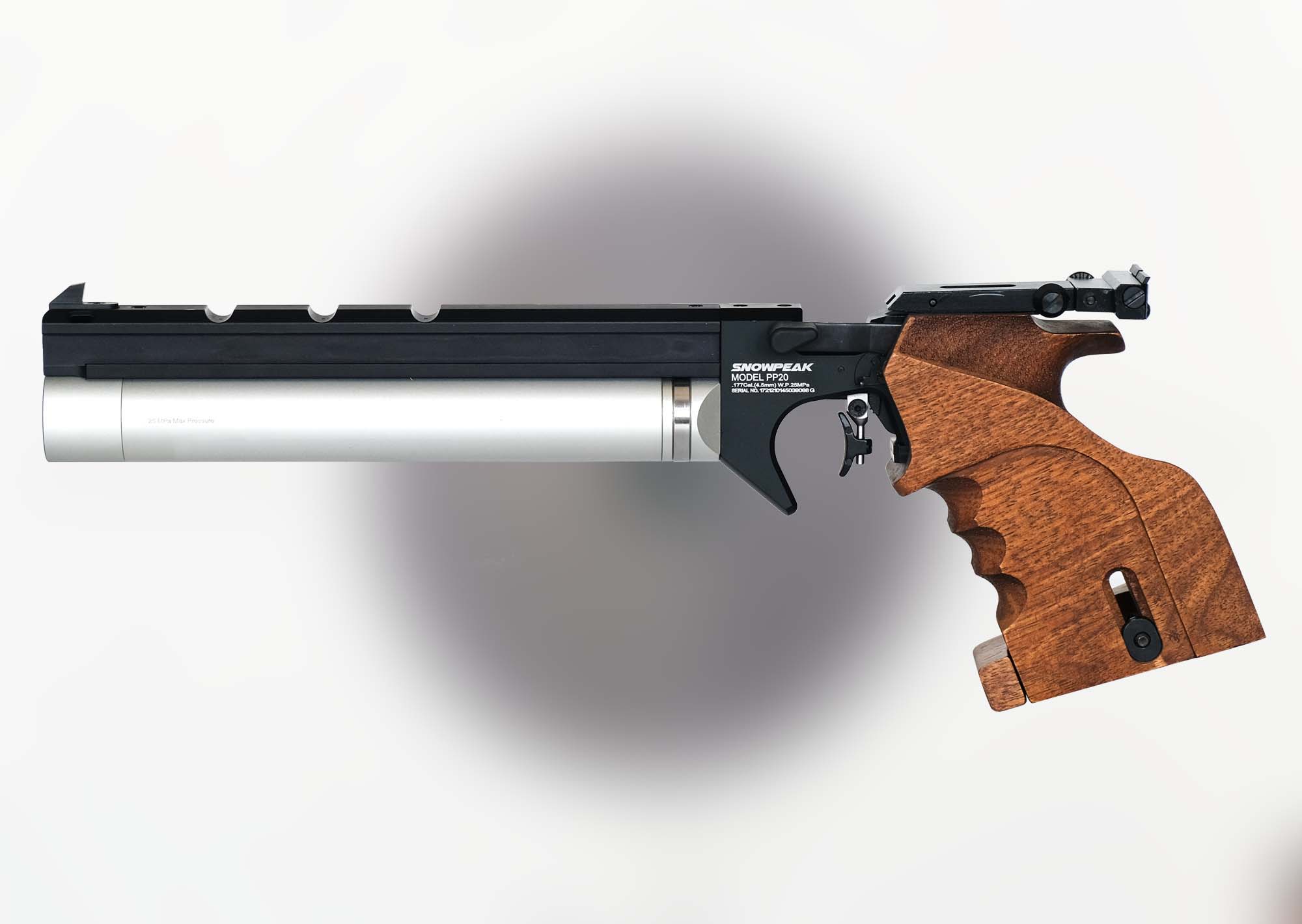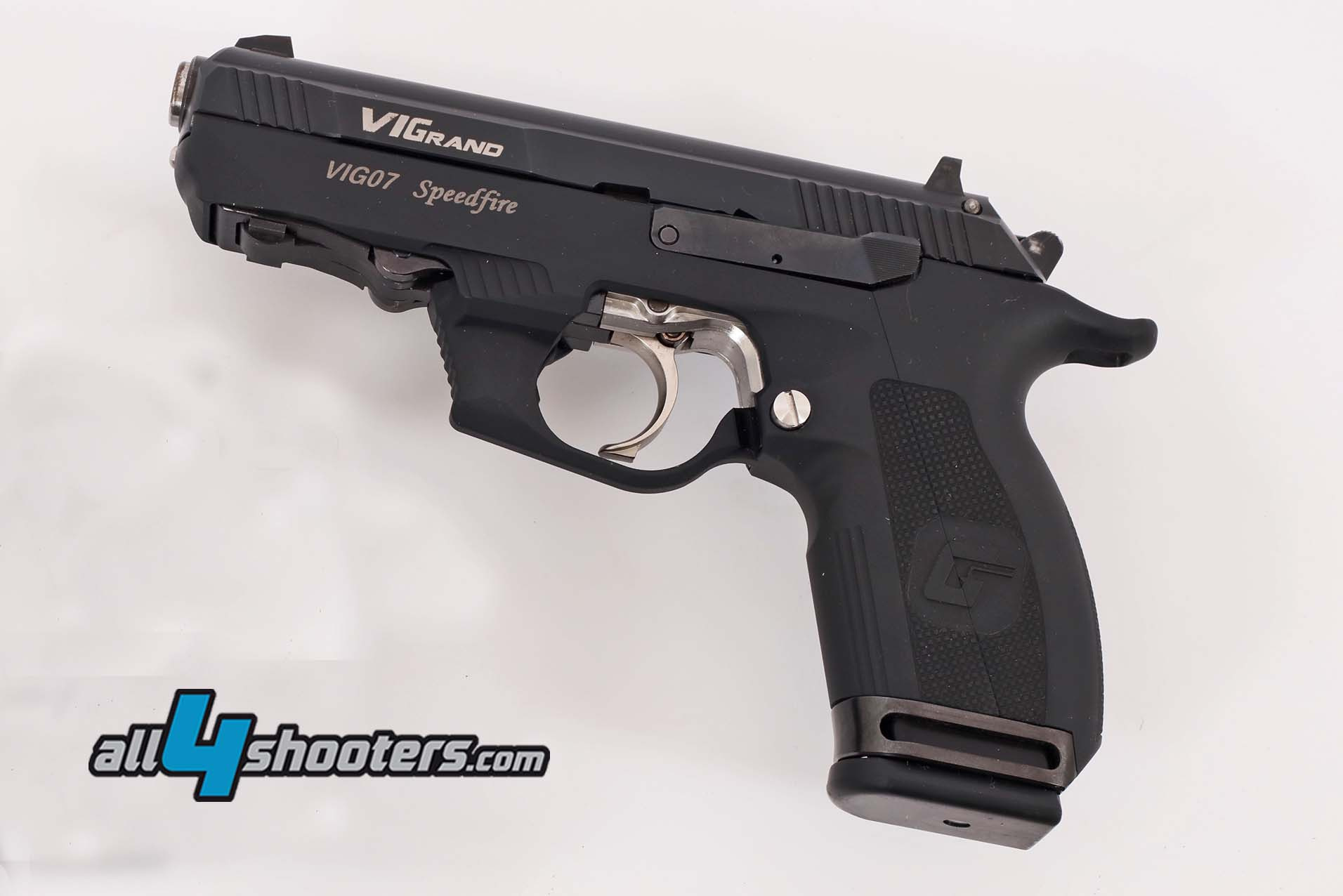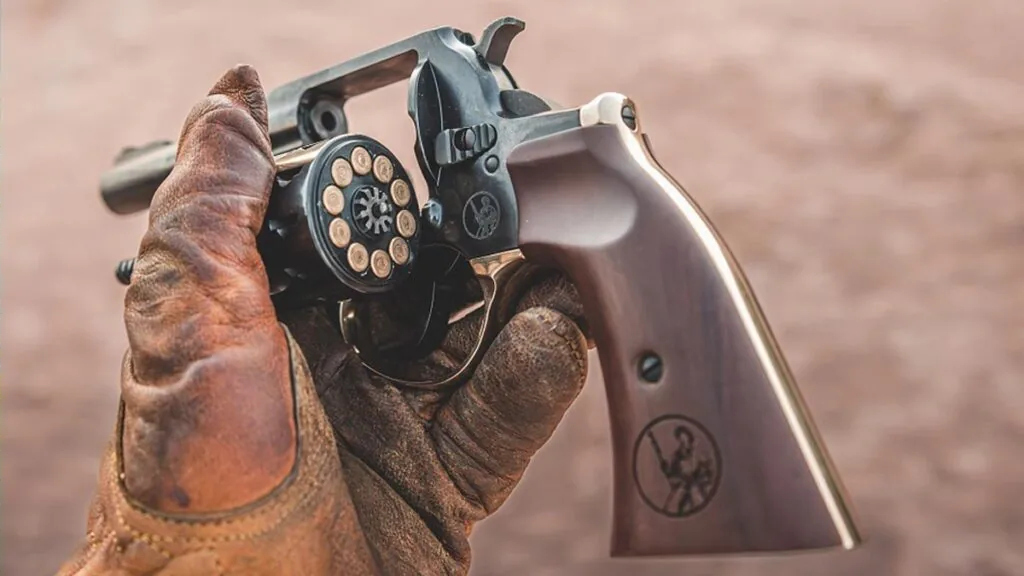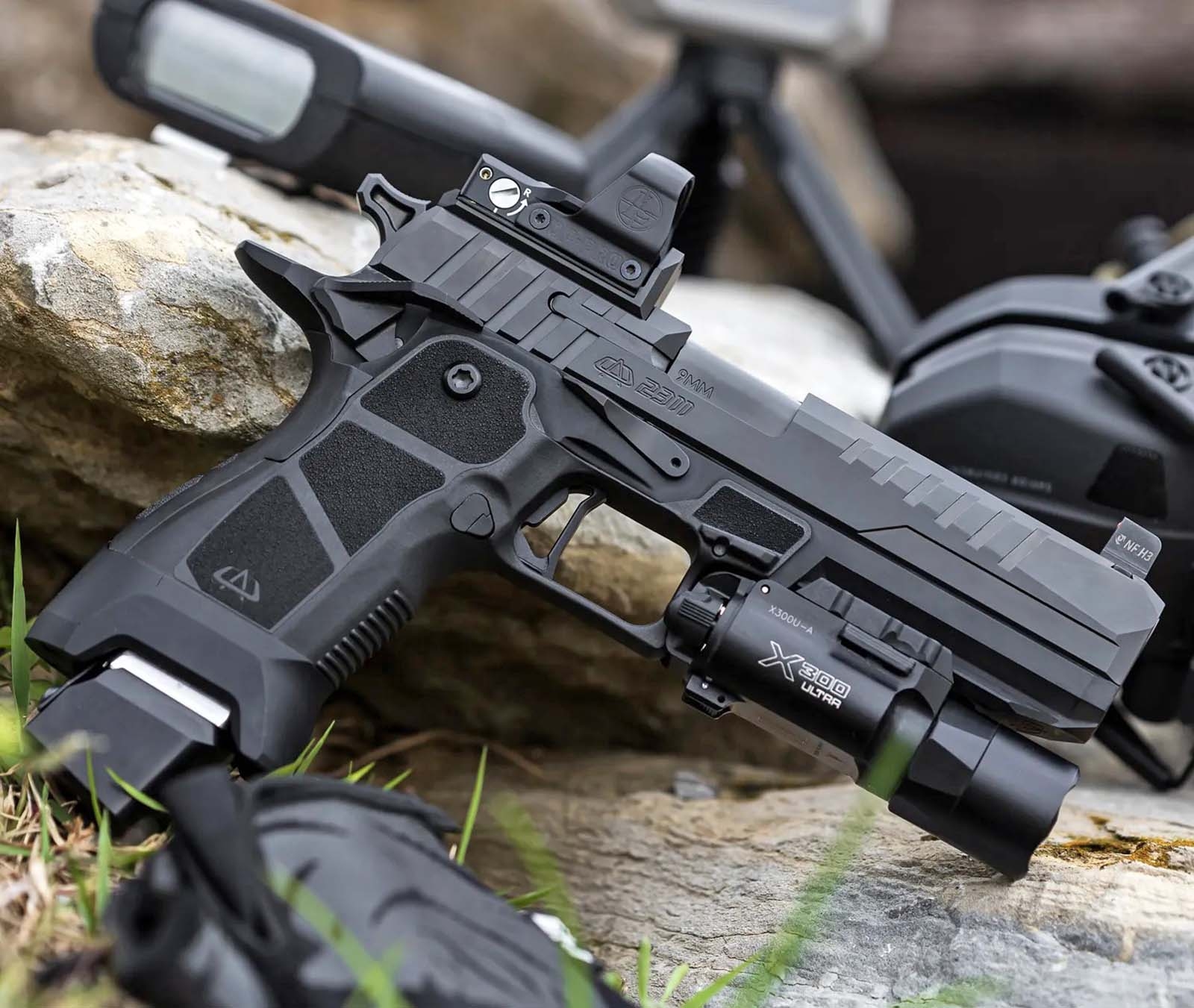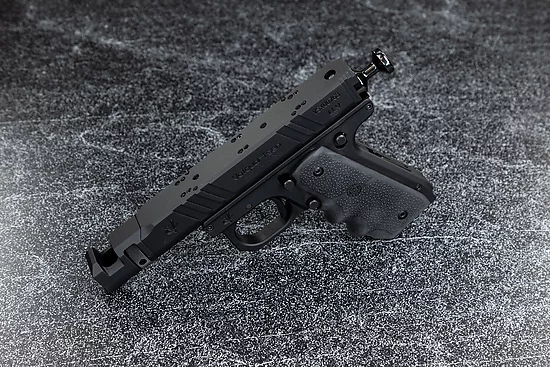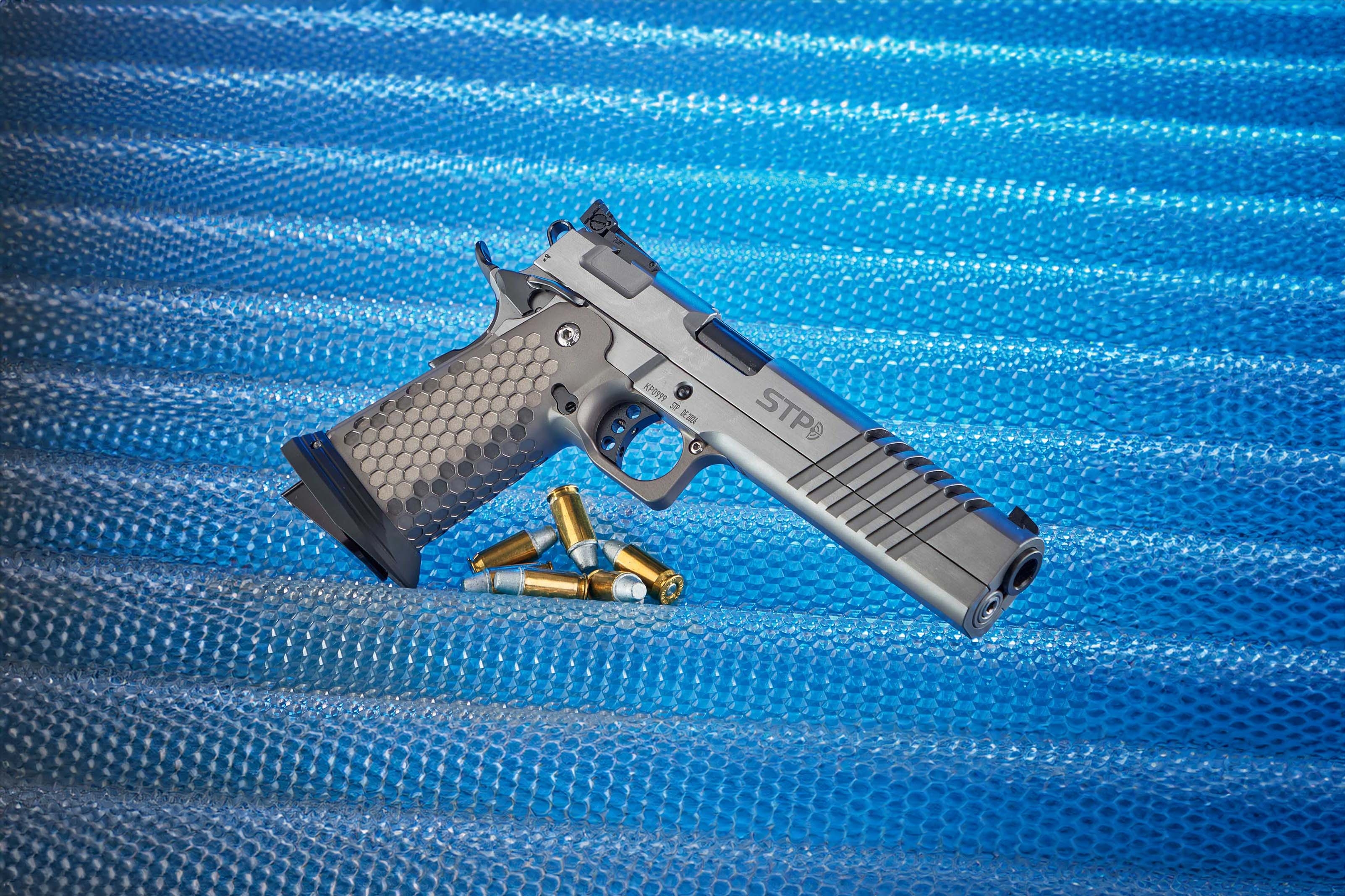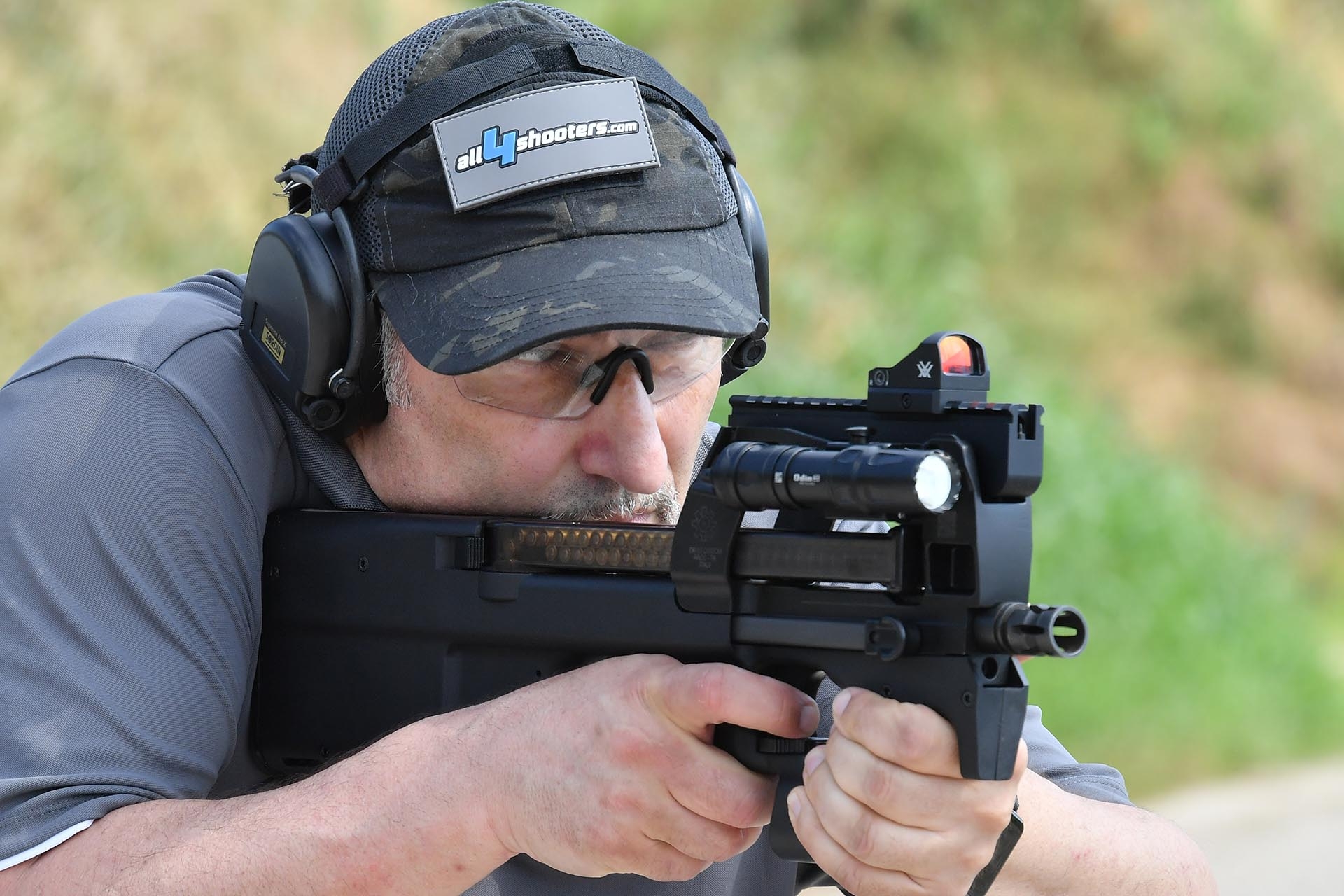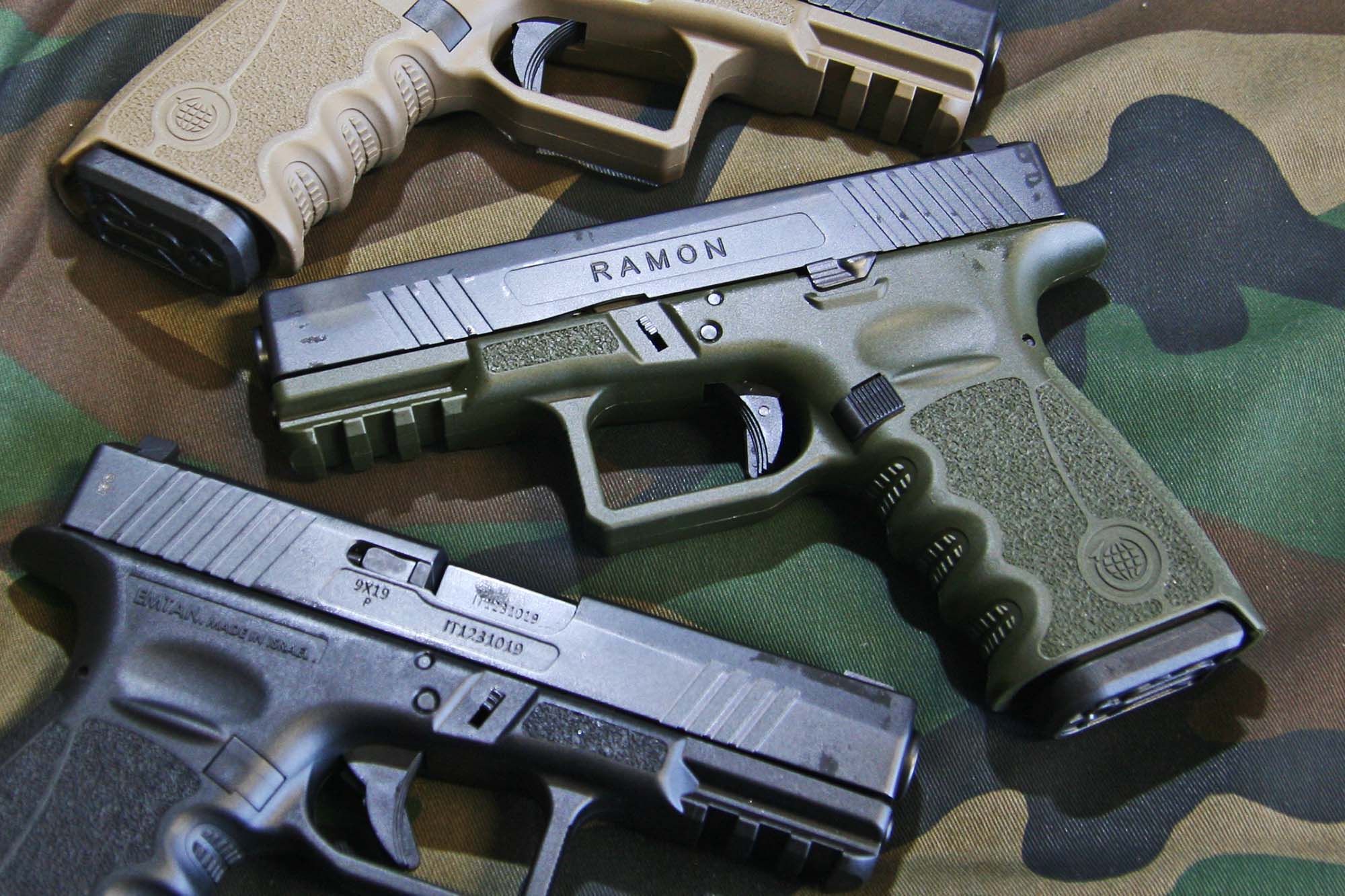A pepper-box revolver maybe, because of the two over/under barrels? Or, since at least the striking cylinder shows familiar features, a variation of Mauser's Zig-Zag revolver? Perhaps a multi-shot revolver, due to the 20-round cylinder? In any case a unique piece, one that no one of the all4shooters team had ever seen before. Everyone agreed on that, not only because of the extremely poor sources. On the gun was the name "Peter Merz" and the location of Basel, in Switzerland, but nothing else could be found about the manufacturer. The research by Swiss experts also came to nothing.
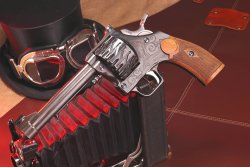
Handling and other characteristics of this exceptional revolver were as mysterious as its origin. Weighing almost 3 pounds, the unloaded gun weighs more than a classic .44 Magnum revolver, but being chambered in .22 LR it fires a relatively weak bullet. Nevertheless, when the cylinder is loaded, it still adds over 0.2 lb/100 grams. The revolver is neither heavy on the barrel nor on the grip, and the cylinder is the center of gravity – at 1.1 lb/500 g, it's heavier than some pocket pistols. Thanks to this cylinder and the thin small bore barrels, the mass rests above the index finger when it's in contact with the trigger. The gun is a single-action model like the Colt M1873 Single Action Army, alias Peacemaker, or the German Reichsrevolver M1879. And this is also a first indication of the designer's ingenuity. The trigger blade travels back so close to the trigger guard that the gun does not need a trigger stop.
The 20-round Merz revolver: all around the cylinder
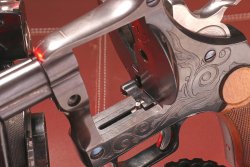
Some parts appear clearly oversized. Apart from the hammer and loading gate, this applies especially to the cylinder. It measures almost 2.36”/60 mm and it swallows – you have to write it down again – 20 cartridges in caliber .22 LR. The fact that a viewer looking at the drum from the wrong side seems to perceive not just these 20, but 30 chambers at once is due to 10 extra bores. The manufacturer drilled a smaller auxiliary bore at the intersection of the respective main bore. These lightening holes and the grooves milled on the outside of the cylinder have probably saved the unloaded cyinder a full pound...
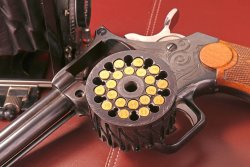
After the cylinder has been removed, a lever appears in the frame floor behind the horizontally running operating cam-lug, screwed to the bottom of the loading gate and fitted with another cam. The function of this can be inferred – in the absence of an operating manual – from a practical test: if the hammer is brought to the safety notch, the loading gate can be opened and locked. This cam prevents the hammer from being cocked when the gate is open. However, if the hammer is cocked or down, the user cannot open the loading gate. When the gate is closed, it is not possible to manually rotate the cylinder. In view of all these safety refinements, our respect for the designer increased.
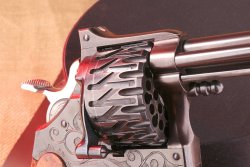
The zig-zag grooves of the Merz cylinder literally forced a direct comparison with the Mauser patent on which the classic German C78 revolver is based. However, differences are noticeable. Thanks to a more complex two-step cycling and indexing system with 18 degrees of cylinder rotation per shot, the extra-wide firing pin alternately ignites the cartridges in the outer or inner cylinder chambers – and thus bullets are alternately fired from the upper or lower barrel. Twenty times 18 degrees results in 360 degrees, and thus a full cylinder rotation. Our respect for the inventor turned into esteem.
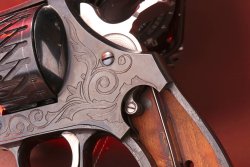
Ejector and frame: technical details of the Merz revolver
Here too, various refinements await you. For example, the cylinder, which can be loaded over two levels, also requires two barrels lying one above the other. And they are supposed to hit the same spot. The double-barrel arrangement requires a fork-shaped ejector too. The latter pushes two cartridge cases into the open in one single stroke. Therefore its two rods must also work with a corresponding offset.
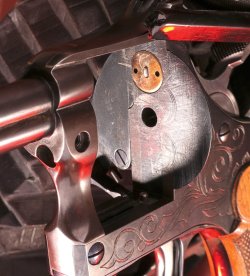
At first we thought Merz had used an old frame from Colt or Smith & Wesson. But neither for old nor new models did the corresponding Ransom Rest grip adapters fit even slightly, apart from the V-spring of the Merz revolver – something that Colt held on to right to the end with his revolvers too. In addition, the hammer spring did not fit into any modern scheme, resembling rather that of the Reich revolver. Against the hypothesis of a re-use of a modern frame also speaks its multi-part construction. Only the front grip strap has a ground, five-digit number. This is an indication that perhaps some parts of the 20-shot gun have been taken from other revolvers. Borrowings from the Wild West classic Colt Peacemaker consist in the type and attachment of the cylinder axle and the positioning of the ejector housing on the side of the barrel. Rather modern appears the dovetailed target front sight on the fluted ramp, which makes an excellent contrast with the fixed U-notch rear sight for the aiming eye.
The Merz revolver features a main leaf spring that is only slightly preloaded. The hammer falls after overcoming a trigger pull weight of about 4.4 lb/2 kg – a value that subjectively appears lower. The lock work runs with the smoothness and precision of a Swiss movement – which is also true of its origin. The grips also borrow from Swiss handguns. When assembling them à la SIG P210, they must be pushed under the lock plate by means of a lip. So if you want to remove them, you have to lift them slightly before they can be removed.
All in all, the 20-round Merz revolver showed a very high level of craftsmanship. Only a somewhat sloppily made floral vine engraving clouded the picture. And then the bluing color on the top strap turned out a little different than on the other metal parts. This can most probably be traced back to different types of steel.
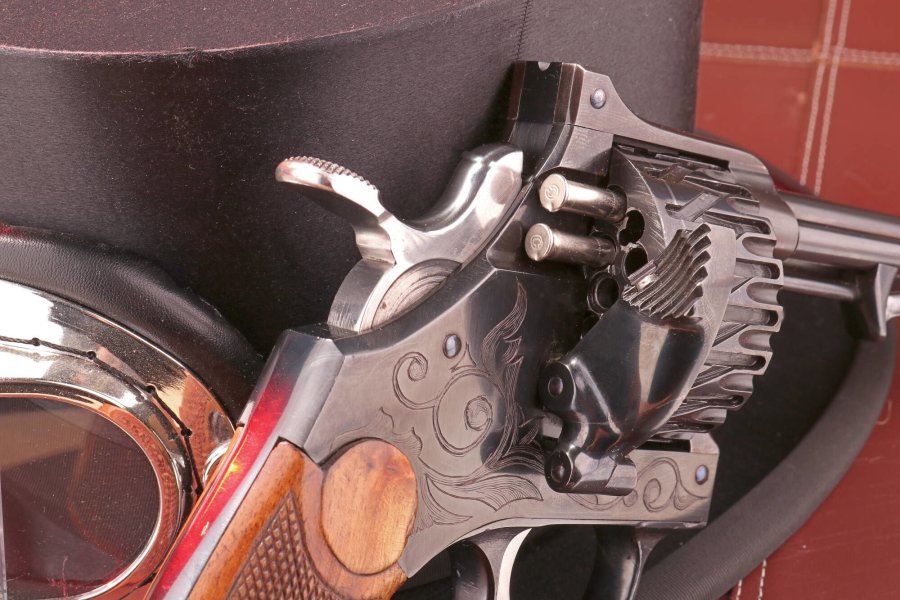
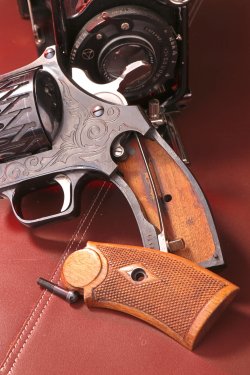
With the odd Merz revolver in .22 LR on the shooting range
Seldom did we go to test shooting with such high expectations – although it was clear beforehand that particular "bang effects" were unlikely to occur. Recoil could only be described as "minor" to "hardly existing". But what was most interesting was accuracy, i.e. the question of whether both barrels would have halfway the same point of impact. In fact, the upper barrel shot a few centimeters high, the lower one a few centimeters low – mostly it did so, because some hits were in the middle, from some chambers even in the other group. The testers determined this by loading only the inner or the outer chambers and marking all hits each time. Although there were mostly beer-coaster sized groups, because of its two barrels this exceptional gun also produced shot patterns which one tester described as follows: "They are more oval-shaped groupings instead of circles”. Nevertheless the shooting performance can be described as very good. The best grouping is quite respectable without a flyer, with only 3.38”/86 mm.
What does remain of the unique double-barrel Merz revolver?
Even after several weeks of reading and asking, nobody knew when this revolver was manufactured. Judging more by instinct than by valid features, the team dated the creation of the gun in the post-war era. It also remains to be clarified why such a large, imposing device with such unusual technology, but for such weak cartridge, was made. The energy of the full 20-round cylinder load taken together doesn't amount to 3,000 J: even 60 or 70 years ago, nothing that a normal six-shooter in .38 Special caliber wouldn't have produced. The question of why is probably answered by the fact that someone could do it – quite simply.
Text: Robert Riegel und Matthias S. Recktenwald



